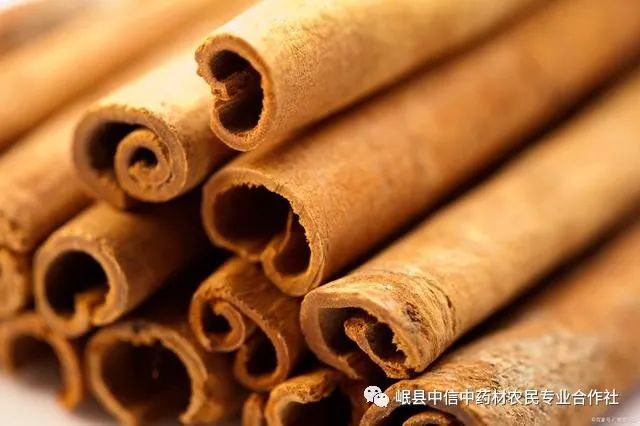Cinnamon (Rou Gui) is a plant from the Lauraceae family, classified as a medium-sized tree with rough bark that appears gray-brown from a distance, similar to the outer bark of other tree species.
The cinnamon we commonly use has had its outer rough skin and impurities removed; this part is the true medicinal portion.

In local markets or pharmacies, we often encounter cinnamon. Below, we will provide detailed descriptions of cinnamon’s appearance and aroma through some close-up observations.
After processing, cinnamon typically appears in a rolled or channel shape, with the outer skin mostly gray-brown (the gray-brown outer layer is mostly removed). It feels distinctly rough to the touch, while the inner surface of the cinnamon is relatively flat, with a reddish-brown color, leaving an oily mark when scratched.
Another characteristic is that cinnamon is hard and brittle, making it easy to break with the hands.
Effects of Cinnamon
Besides being used in cooking to enhance flavor, what effects does cinnamon have?
Before discussing its effects, it is essential to understand the properties and meridian affinities of cinnamon, as this knowledge will help grasp its benefits.
Properties: Pungent and sweet, very warming; in simple terms, consuming it can easily lead to excess heat.
Meridians: Three – Kidney (Shen), Heart (Xin), and Liver (Gan); this indicates the effects it has on these three organs.
Effect 1: Tonifies fire and assists yang, alleviates pain. As mentioned earlier, cinnamon is warming and is effective for yang deficiency, cold in the uterus, and abdominal coldness, as well as for vomiting and diarrhea.

Effect 2: Guides fire back to its source. What does this term mean? In simple terms, it refers to directing the floating false fire back down. For example, conditions like sore throat and oral ulcers caused by yin deficiency and excess fire can be treated more effectively by adding cinnamon to bitter cold herbs.
Effect 3: Warms and unblocks the meridians. For those who frequently experience soreness in the lower back and knees, as well as kidney deficiency-related back pain and leg pain, cinnamon can be used to achieve desirable results.
How to Use?
Cinnamon has a strong aroma, indicating it contains volatile substances. Therefore, when decocting cinnamon, it should not be boiled for too long to avoid losing its efficacy or reducing its effects.
In addition to using cinnamon as a decoction, it can also be ground into a fine powder for oral consumption, although this should be adjusted based on specific circumstances.
All images and text are sourced from the internet; please contact us for removal if there are any copyright issues. Thank you!

